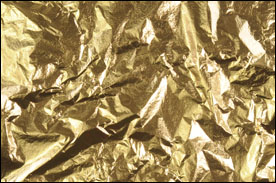Would you give something very precious to someone else to mind? Maybe if you did not feel secure and you did not have a safe place for it or you had borrowed on the strength of its value. After World War II West Germany’s “economic miracle” during the 1950s was built on hard work and manufacturing of the mittelstand at the core of the revival. The Deutsche Bundesbank accumulated dollars from a vibrant export economy which it swapped for gold at the US Federal Reserve. With Germany split between capitalist west and the communist East German state until 1990, the view was that storing most of the gold abroad was a way to keep it out of Soviet-reach during the Cold War. Germany has 3,386.4 tons of gold or about 42 tonnes for every million Germans. Germany’s gold hoard is worth 1.32 billion dollars at the current gold price and most of it is in the Federal Reserve with the rest in London, Paris and Frankfurt.
The Bundesbank sent a delegation to the New York Fed’s vault in 2012 to make sure the German gold was still there. That seemed like a good idea- as the Bank is obliged to ensure its safety on behalf of dem Deutschen Volk. The Bundesbank still believes that it’s sensible to store by far the bulk of its gold reserves in the US so the metal can be swopped more easily for foreign currency in an emergency.
The US has just over 8,000 tonnes of gold representing 26 tonnes for every one million Americans – I like these comparisons as they indicate the relative avarice for gold among peoples or maybe just their relative distrust of IOU’s in a world swimming in debt. I wonder how you could be certain that the gold you are looking at is actually yours if push came to shove. I am reminded of the fable of the Emperor’s clothes but I have a warped sense of humour. The Central Banks of China and Russia are buyers of gold in market, at least in the case of Russia before the recent precipitous fall in the value of the rouble. The gold holdings of China and Russia per million population are relatively very modest and respectively a paltry one and eight tonnes. Such gold accumulations reflect wealth, fear, trust and maybe a fatalistic view of the future and but there is a long way to go before anyone reaches the miserly gold hoarding of the Swiss at 129 tonnes per million population. Just imagine if the politburo Standing Committee in China decides to match just the modest holdings per capita of the Russians? China has just over one thousand tonnes of gold in reserves. World-wide gold production in 2013 was 2,770 tonnes and China is the biggest producer with 15 percent. If theoretically China was to increase its gold holdings to 8,000 tonnes, equivalent to Russia’s per capital holdings, and then it would have a significant impact on gold over the next decade at least. China as it becomes the largest economy might want to hold more gold instead of holding fiat money whose only value has not been based for a very long time on the discipline of gold reserves but simply by Sovereign decree. Prolonged quantitative relaxation may lead to muscle wasting and the ultimately the ability to recover one’s economic strength.
So where do the Swiss hoard their gold? SNB treats the location of the gold reserves as a secret. However the gold is believed to be stored by the Swiss National Bank (SNB) in huge vaults beneath the Bundesplatz to the north of the federal parliament building in Bern. There was some extraordinary independent confirmation in 2008 when the Bernese newspaper Der Bund published a photograph of Swiss gold bullion taken by a photographer who apparently was allowed to take the photograph of the gold at the SNB premises in Bern in 2001. Der Bund also quoted a retired official of the city’s surveying office as saying that the gold vaults take up an area of roughly half the Federal Square and have a depth of dozens of meters, down to the level of the Aar river. The SNB says that the gold reserves are stored in different secure places in Switzerland, approximately 70 percent and abroad with the bank of England and Bank of Canada. It seems that the Swiss do not share the same concerns as maybe the more insecure but trusting Germans.
And now just another brief note on China and zinc, which is my preferred finite metal which shines on this planet. We know China is the biggest consumer of zinc at about 45 percent of world supply. What may not be as well known is that China produces a huge amount of its own zinc. In 2000 it produced about 20 percent of world mine supply but now it accounts for a staggering 37 percent. So when I asked a boutique zinc trader recently about his view on the forward price of the metal he shrugged and said that he lived in the physical world and not the world of statistics. He strongly believes that if the zinc price rises that the Chinese will “turn on” mine supply. This may be true but as a geologist I think about constraints on natural metal endowment, and where most of the Chinese mines are on the cost curve.
MMG announced at LME week in London in October that its giant Century mine in Australia would limp on for another quarter and not now close until the third quarter of 2015. Miners understandably do not like to close mines and try to delay the inevitable. However that does not mean that the day of reckoning is not close at hand.
The Century Mine closure when it comes soon is significant because it produces between 350,000 and 370,000 tonnes of zinc in concentrate and that, at about three percent of mine supply, equates to the shortfall which the International Lead and Zinc Study Group (ILZSG) predicts will be the deficit in the global refined zinc market. This zinc production may be equivalent to the aggregate production of small (less than 10,000 tonnes of zinc in concentrate) zinc mines in China. The Chinese wants to close unsafe and polluting mines which are disproportionately on the small side and this may remove another significant amount of zinc mine-supply. The point here is that we cannot seriously try and understand the global zinc market unless we know what is really going on in China and to what extent it is a swing producer. What throws predictions on the demand side is the invisible market and to what extent some of China’s imports of refined zinc are ending up in bonded warehouses to act as collateral in China’s financial engineering sector rather than going into real engineering. It just takes a scandal and implosion of confidence such as the Quingdao port scandal to breach the dam and soak the glowing demand in the market.
Happy Christmas to you all.
John

